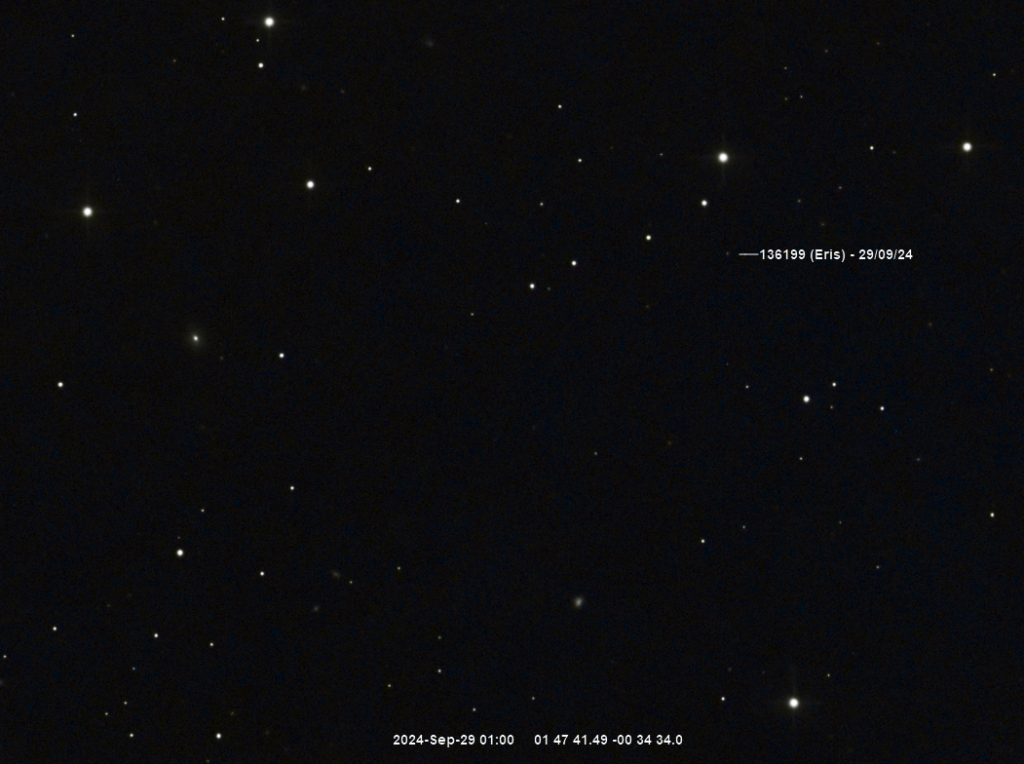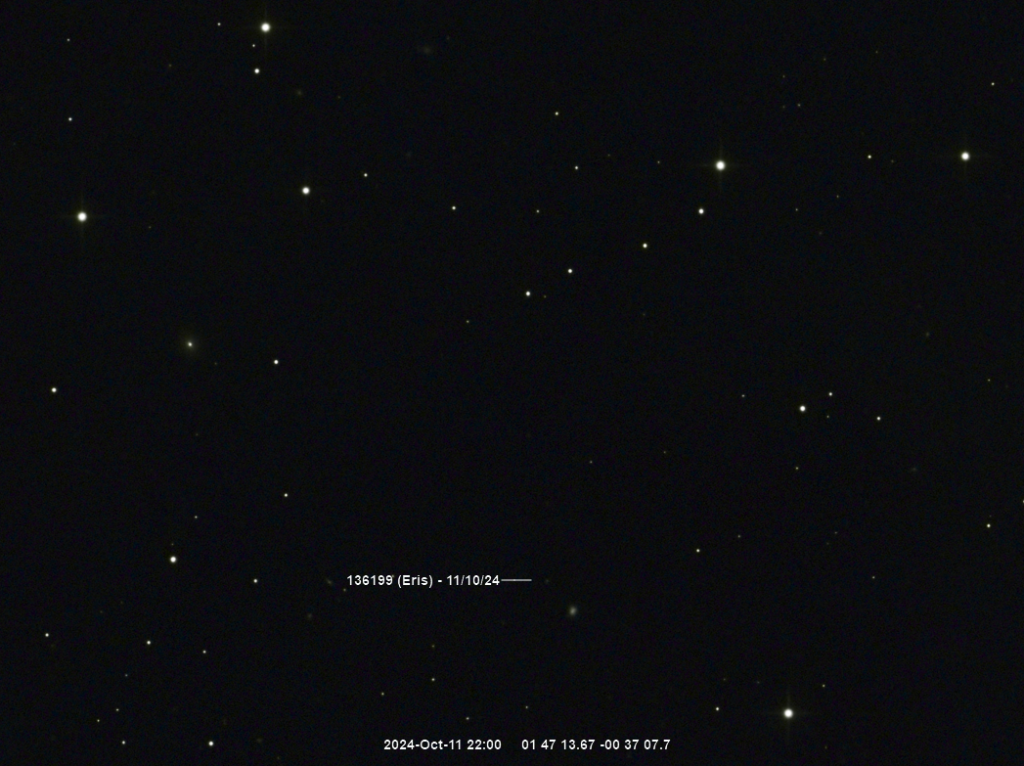Eris
Eris is a dwarf planet located 14.5 billion km away in the so-called Scattered disc, an area beyond the Kuiper Belt. Once you start tracking objects beyond Neptune, light becomes obscure and distances become immense. 14.5 billion kilometers is about 3 times the distance between the sun and Pluto. This makes Eris probably the furthest object in our solar system we can image with our amateur equipment.
Eris is also very dim at +18 magnitude. On top of that it’s currently located in Cetus which is a constellation that is not getting very high up in my northern skies. Eris will stay in Cetus for a while during its 557 year orbit around the sun.
Preparation
Astrophotography is not that complicated. We basically look up targets in our astronomy software, figure out the framing, exposure times and which filters to use and we’re set. Once the scope is set up and polar aligned, we slew to the target and start shooting exposures. Those are then calibrated, stacked and post-processed, all of which can be done today in a semi-automated way without too much effort. The only thing we really depend on is clear skies and a stable atmosphere.
For more peculiar objects it’s a bit more complicated. Trans Neptunian Objects, small galaxies, peculiar stars, asteroids, comets etc. require more preparation and active involvement.
The first issue is that objects like Eris are not accurately tracked in most of the available (free) astronomy software. To find its precise location I had to find it in the Nasa Horizons Systems database. The second challenge is in tracking the object, this means figuring out where the object will be in the future, preferable in the same image frame and making sure there is ample clear sky available to shoot the object twice in the required time slot. The end result is hopefully two images that show the movement of Eris.
Results
In total I had 5 sessions on this object. My first session was fruitless due to the September super moon event but I did manage to clearly capture Eris on the second try. Sessions 3 & 4 were interrupted by clouds but yesterday I finally managed to find Eris again
Eris as a faint spot on the night of the 29th of September in the constellation Cetus under a near new moon. This is 1 hour of integration time with 5 minute subs.

Eris again, now moved close to galaxy PCG1139116 on the 11th of October. Even with more integration time it remains very, very faint.

Gif animation with inverted view added